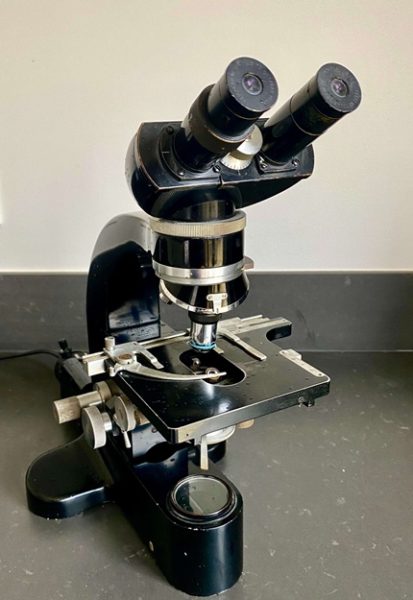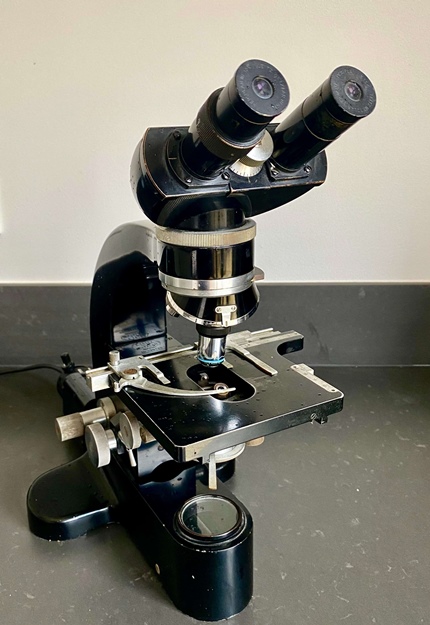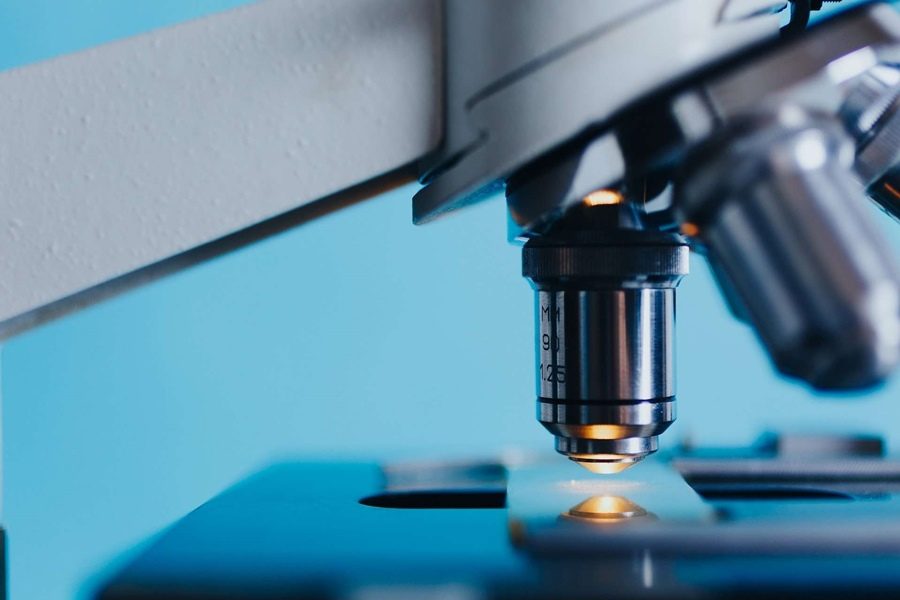
A microscope is a piece of equipment that allows you to magnify small things, as you may know. An optical microscope, which utilizes lenses to create pictures from visible light, is the most common type of microscope. Electron microscopes use electron beams to create pictures. Acoustic microscopes use high-frequency sound waves to create pictures. Tunneling microscopes generate pictures by using electrons’ ability to “tunnel” through the surface of objects at extremely short distances. In this article, we are going to tell you about the uses of microscopes.
Importance of Microscopes
In our day-to-day life, we use a lot of things that we do not even know of their manufacturing procedure. But if we do a little research, we would find out that, during some part of the process of manufacturing those items, we can find microscopes. Obviously, microscopes are that important for the manufacturing processes of many items. Sometimes, we have made use of microscopes unknowingly. Nevertheless, you can get to know about the uses of microscopes through this article. Then, you would be able to have perfect knowledge of the uses of microscopes subject for certain.
What are the Uses of Microscopes?
To start with, we thought of listing out the professionals that make use of microscopes in order to tell you the uses of microscopes. Here they are.
- Microbiologists
- Chemists and biochemists
- Zoologists and wildlife biologists
- Botanists
- Forensic scientists and technicians
- Jewelers and gemologists
- Environmental and geoscientists
No doubt, you would be so anxious to get to know about all these professions and the uses of microscopes to those professions. We are willing to tell you too. Keep reading!
1. Microbiologists
A microbiologist is a professional who encompasses both biochemists and biophysicists. They study bacteria and fungus, as well as other living entities. A fluorescence microscope is the most frequent form of microscope used by microbiologists. They study these small animals so that we may have a better grasp of the microscopic environment that allows us to live our lives. Even with microscopes, observing microorganisms presents certain challenges. As a result, dyes and stains are employed to assist contrast the organisms being researched, allowing them to be seen individually. This is particularly true in the case of bacteria. The diverse features specific to a fluorescent microscope are highly advantageous when trying to contrast microorganisms.
When a microbiologist applies fluorescent dye to whatever microbe they are examining and then places that colored microorganism beneath a fluorescence microscope, an excitation response occurs. An excitation occurs when a microbe emits more light, which increases magnification and allows the microbiologist to examine the material in greater detail.
AmScope 40X-1000X Upright Fluorescence Microscope with Rotating Multi-Filter Turret + Ultra-sensitive CCD Camera
This is a six-filter turret upright fluorescence microscope with transmitted and reflected illumination. The microscope has an infinity-corrected optical system with a magnification range of 40X to 1000X, as well as Koehler diascopic and episcopic lighting. A rotating filter-selector houses up to six fluorescence filter-blocks in the strong 100W wide-spectrum mercury-vapor episcopic illuminator; already included are ultraviolet, violet, blue, and green excitation blocks. For even, high-contrast illumination, the substage illuminator utilizes a 30W halogen lamp with field-lens and diaphragm.
2. Chemists and biochemists
Microscopes are required for the investigation of materials at the molecular and sub-molecular levels. Because of this, chemists and biochemists become intimately acquainted with microscopes and microscopy early in their careers. Some chemists focus on fundamental research into how different compounds interact, while others work on generating novel materials and products. Specialized microscopes are required for these various study procedures. Polarized microscopes, stereo microscopes, and inverted microscopes are the most often used types of microscopes in chemical laboratories. Nevertheless, electron microscopes are available in some labs.
AmScope SE305-P Binocular Stereo Microscope, WF10x Eyepieces, 10X and 30X Magnification, 1X and 3X Objectives, Upper and Lower Halogen Lighting, Reversible Black/White Stage Plate, Pillar Stand, 120V
Two 10x18mm widefield eyepieces, 1x and 3x objectives, upper and lower halogen illumination, two stage plates, and pillar support are in this stereo microscope. The binocular viewing head features a 55-75mm interpupillary range and a 45-degree tilt to make viewing easier for children. For viewing large-scale specimens that require handling or repair, the WF10x18mm eyepieces combine with the 1x and 3x objectives to produce 10x and 30x magnification and a greater working distance. The optical glass lenses are completely coated to provide high-resolution photos and produce crisp images.
3. Zoologists and wildlife biologists
Animal behavior, features, and habitats are studied and explored by wildlife biologists and zoologists. These scientists frequently go out into the field to study wild animals. They do, however, spend a lot of time in their laboratory examining the samples they gather in order to learn about growing cultures, eating patterns, and illnesses or infections. The principal instruments for the majority of this lab work are specially built microscopes. So, it becomes pretty necessary for them to use microscopes as well.
4. Botanists
A botanist’s profession includes studying plant anatomy, physiology, ecology, cell biology, molecular biology, and genetics, among other things. However, while they examine all of these factors, their primary goal is to learn more about the process of photosynthesis. They can also investigate the interactions between plants and the environment, which is an essential aspect of their employment. They consider things like food usage, crop coverage, and breeding when doing so.
Their function in understanding the plant-environment link is vital to both us and the environment, and a microscope is critical in assisting a botanist in this endeavor. A botanist may accurately estimate those required parameters by using a microscope, and they also need a microscope to examine plant cell structure. Their study and investigation are made feasible by a microscope with high magnification, and light.
Science is Beautiful: Botanical Life: Under the Microscope Hardcover – June 5, 2018
This is a book by Colin Salter. The beauty of the plant world has long been recognized for its aesthetic appeal, but when examined under an electron microscope, its real beauty is revealed. This collection features some of the most amazing tiny photographs of flowers, trees, and grasses ever created, thanks to technological advancements. Pollen, seeds, petals, algae, and leaves are all marvels to behold. The photos are as lovely as any work of art. And this book consists of all that.
5. Forensic scientists and technicians
A forensic science technician is one career that requires the use of a microscope. A forensic science technician investigates criminal cases. Their job entails gathering and analyzing evidence from various crime scenes. They look into matters that have to do with criminal behavior.
These employees collect data, analyze it, and conduct various scientific experiments. Weapons, fingerprints, biological materials, chemicals, and body fluids are among the items they must analyze. They may examine hair fibers from a scene or a suspect under a microscope. It’s simple to detect if the hair fiber came from a person or an animal when they use a microscope. They have the ability to isolate and compare samples.
Microscopes are useful for gathering evidence and investigating a crime scene more thoroughly. A microscope enlarges evidence to incredible detail. Checking ammunition and verifying when and what gun was used is only a few of these things. It may be used to look at particles and examine hair fibers. It can also track for evidence, shards, fibers, fingerprints, and other items left behind at a crime scene.
You can inspect attentively and compare items if there is a house break-in or an accident. Magnifying prints can aid in the search for a possible culprit. Death factors can aid in the identification of evidence and various causes.
Radical Forensics High Power Metallurgical & Medical Teaching Comparison Microscope for Fibre Hair Metal Ink Top Bottom Light with Camera
With this microscope, you can check bullets, bullet casings, weapons, hair, currency, fabric, tissues, and all that is necessary. This has a metallurgical glass optical system with anti-fungus, anti-reflection, and hard coating on all optical components.
6. Jewelers and gemologists
Mainly, the function of a jeweler or gemologist is to identify and value jewels. Further, they are experts in determining a gem’s manufacture, cut value, and authenticity. Also, they can tell if a piece of jewelry is genuine or not. Of course, they may double-check that the components have been appropriately cleaned. A gemologist can use a microscope or magnifying glass to perform all of these things. In fact, they are jewelry professionals who can detect minuscule gemstone fragments. Examining the gem’s smaller fragments is a part of their work. Consequently, a jeweler’s profession would be impossible without the use of a microscope.
Microscopes are powerful enough to spot defects in gems. Jewelers and gemologists can use a special microscope called a gemological microscope to spot those faults due to the high magnification levels accessible on the gemological microscope. When a jeweler examines gems under a microscope, they may examine them from a range of angles and sizes. Different grades or quality levels exist in jewels, and these degrees determine the jewel’s unique worth or cost. This position is crucial since a jeweler plays a key role in assessing the value of a diamond.
AmScope GM400TZ-10M Digital Trinocular Gemology Stereo Zoom Microscope, WH10x Eyepieces, 3.5X-90X Magnification, 0.7X-4.5X Zoom Objective, Halogen and Fluorescent Lighting, Inclined Pillar Stand, 110V-120V, Includes 0.5X and 2.0X Barlow Lenses, 10MP Camera with Reduction Lens, and Software
A long working distance allows users to do work or manipulate huge materials, such as gem and jewelry applications, and a 10MP camera with a reduction lens and USB 2.0 output allows users to capture or display photos on a computer or projector. Further, this has a trinocular viewing head featuring 10x widefield high-eyepoint eyepieces, adjustable interpupillary distance, fixed 45-degree vertical inclination to reduce eye and neck strain, and 360-degree rotation capability for sharing. Moreover, for inspecting large-scale specimens, a 0.7x-4.5x zoom objective enables continuous zoom magnification and a larger focal length, a 0.5x Barlow lens expands the working distance, and a 2.0x Barlow lens widens the magnification range.
7. Environmental and geoscientists
Environmental scientists use microscopes on a regular basis. Microscopes, for example, are in use by geologists, geochemists, and geophysicists to determine the composition of various rocks. Also, microscopes are in use by oceanographers, hydrologists, and environmental science technicians to examine water and soil samples for contaminants.
The Bottomline
In this article, we focused on the uses of microscopes. We mainly discussed the professionals who use microscopes. And we think that you could grab a good understanding of this with what we told you. Further, you can read about the tools of a plumber, electrician, carpenter, masonry worker, HVAC technician, ironworker, glazier, solar installer, and so on.




